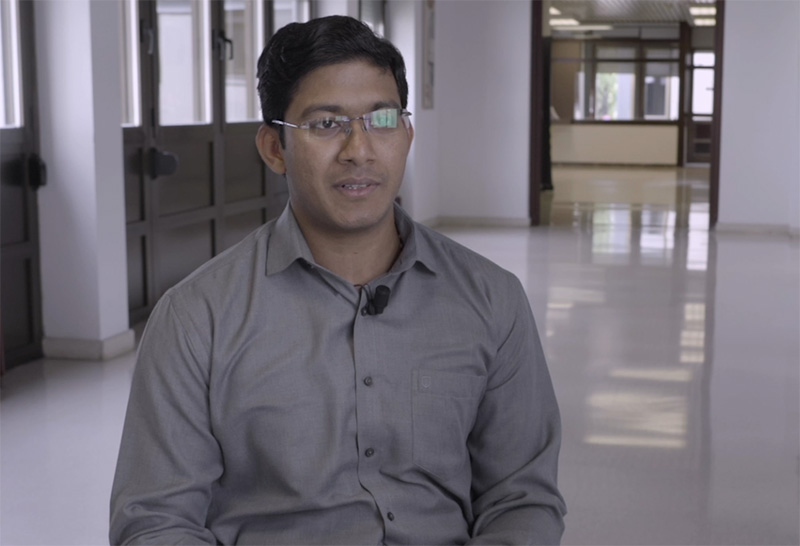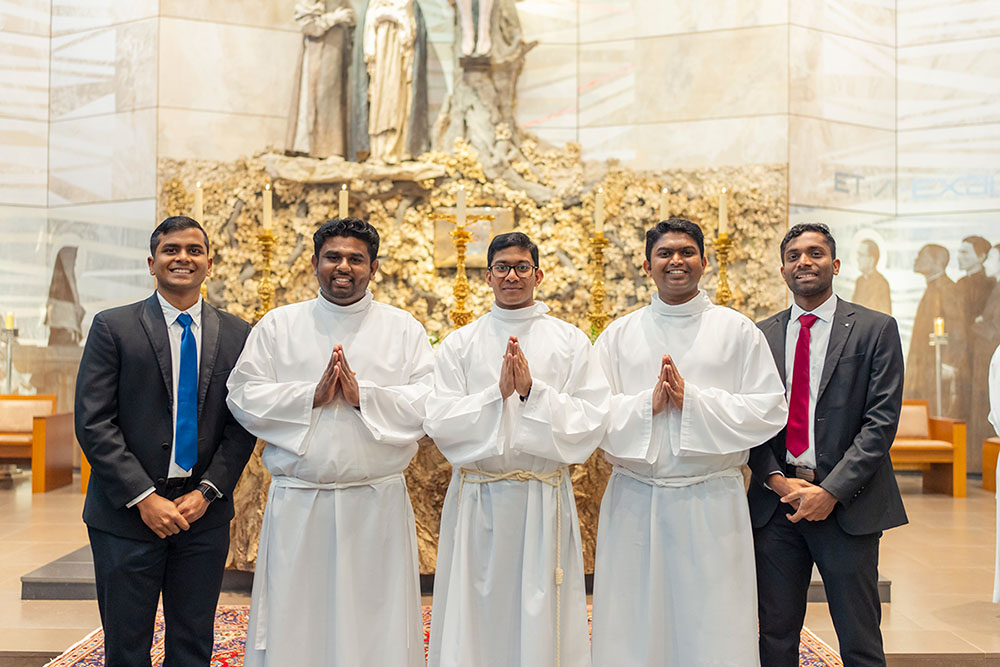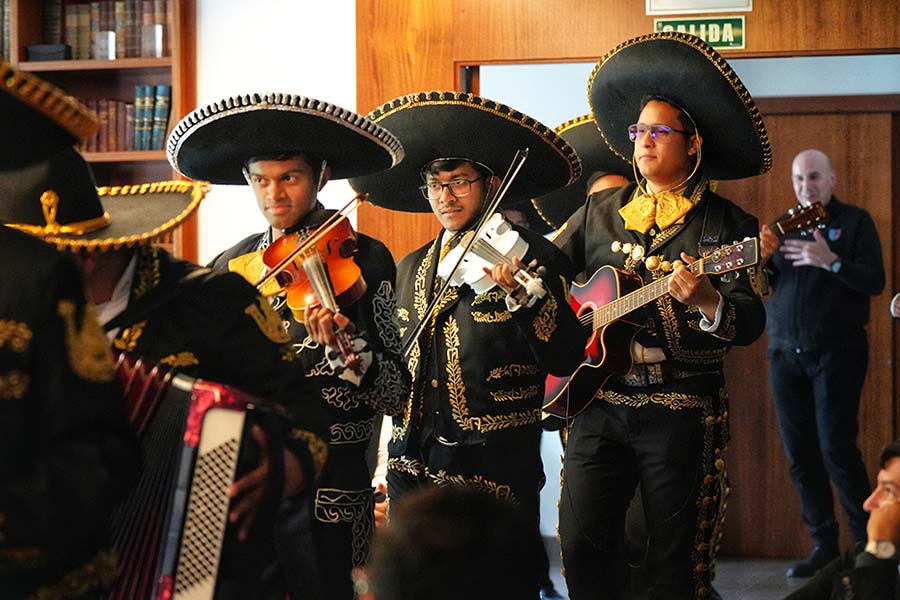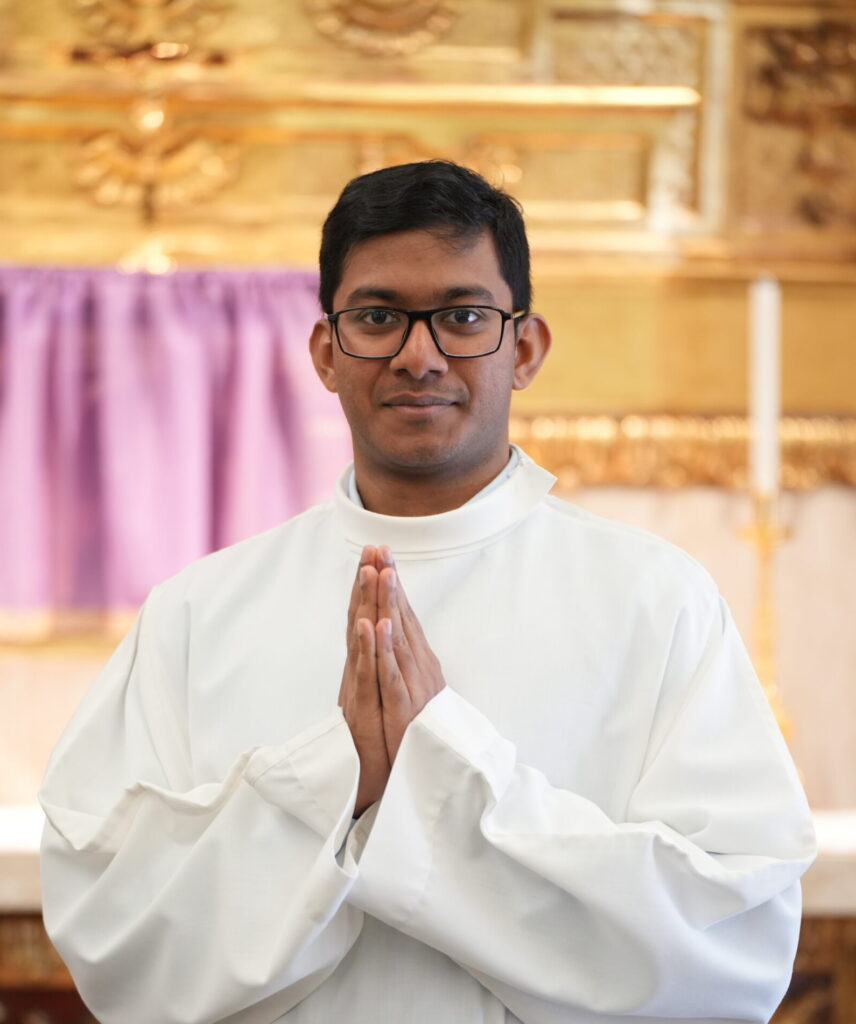
Anto Benzigar, a seminarian from India, entered the seminary at the age of 17. Now 26 (in 2025), he is studying the fourth year of theology at the Ecclesiastical Faculties of the University of Navarre and resides at the Bidasoa International Seminary in Pamplona.
Anto discovered the love of God as a childFrom a very early age, I received the spiritual nourishment I needed from my family, catechism and a formation in the association. Little Way. Through my parents' prayer life, and their total trust in Christ and devotion to Mary Most Holy, I became aware of the love of God, my almighty Father".
Because for him, the training received at home, in the family, is a treasure that we all have to thank our parents for.. A Christian formation that remains impregnated in our soul.

"Keralite (South Indian) families, like my own, often have a deep-rooted Catholic faith that is passed down from generation to generation.. This determination in family prayer and spiritual practices can be a valuable lesson for European families seeking to strengthen their faith," says the young Indian seminarian.
During his childhood, serving as an altar boy sparked in him a burning desire to become a Catholic priest. And after finishing his high school studies, he entered the seminary on May 31, 2015. He remembers the exact date with great joy and hope.
The origin of Christianity in his diocese (Neyyattinkara) dates back to 1600, when a group of Catholics baptized by St. Francis Xavier settled in some localities in the area such as Neyyattinkara, Vlathankara, Amaravila and Parassala.
In 1707, the Jesuit missionary Fr. Severia Borgis started the Nemom Mission. The first converts came from the community of Nair and the first church of this diocese was erected in 1775 in Amaravila.
But the spread of the Catholic faith increased in his diocese at the beginning of the 20th century with the missionary activity of the saint. Archbishop Aloysius Maria Benziger (OCD).
"His holy life, powerful leadership, missionary zeal and generous assistance to missionary priests paved the way for the formation of several ecclesial communities and the erection of many churches," says Anto.
Finally, on June 14, 1996, St. John Paul II, by means of the bull Ad Aptius Provehendum erected the Latin diocese of Neyyattinkara.
Today, the total population of this diocese is 1,467,000 inhabitants, of which 160,795 are Catholics, 11 %.
"With a relatively small Catholic population compared to the total population, there is a potential need for evangelization and reaching more people," says Anto, who says vocation needs and a shortage of priests in his diocese is a major challenge.
Paradoxically, this area of India has many parishes and missionary centers, and it is a great responsibility of the diocese to provide adequate pastoral care to its faithful, because, in addition, the people in India respect the catholic priest and holds him in high esteem.
This shortage of priests does not prevent the parish life of Kerala is very activewith vibrant communities that foster a sense of belonging and participation in the Church.
"This is something that can inspire European parishes: to create more attractive and inclusive environments for young people," says this young seminarian.

Another of the riches of Kerala, the province of Anto Benzigar, is the rich cultural heritage that combines Hindu, Christian and Muslim traditions. For him, this cultural diversity creates a unique and vibrant society where people from different backgrounds can live and work together.
"I believe this feature can inspire Europeans to embrace cultural diversity and learn from different traditions," he says.
One thing Europeans can also learn from their country is how to overcome obstacles: "Kerala has faced numerous challenges, including natural disasters and socio-economic problems. However, the Keralite people have demonstrated a remarkable resilience and a strong sense of community to overcome these adversities. This spirit of perseverance can be an inspiration to Europeans as they face their own difficulties".
But Anto Benzigar is also gaining great knowledge of Spain. In addition to the language that gives him an international perspective, the cultural heritage of our country and its different ways of thinking.
Of course, as he says, Spain's rich history and art are giving him a deeper insight into the country's past.
But the most important thing is the international perspective that residing in the United States provides. Bidasoa International Seminar: "Meeting people from diverse backgrounds and cultures fosters understanding, tolerance and a broader worldview," she says with satisfaction.
To this he adds the broad theological, spiritual, human and community formation, because, for him, living in a seminary fosters a sense of community and shared values.
"I am learning to live closer to others, cultivate relationships and support each other in this spiritual journey. Moreover, the pastoral experience I am gaining, such as volunteering in local parishes or working with marginalized communities, is of great value in serving others. All of this contributes to deeper personal growth, to manage my time, develop self-discipline and cultivate inner peace," she concludes.

Faced with the great challenge he will face when he returns to his country, this young seminarian from India dares to launch seven characteristics that a 21st century priest must have in order to live for the people he serves.
Marta SantínJournalist specializing in religious information.